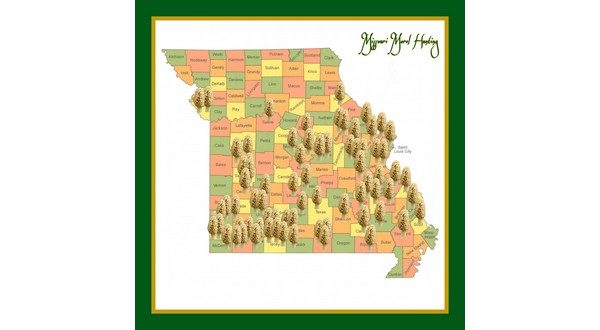
Photo: Courtesy Missouri Morel Hunting
A large number of counties have been added to the Missouri Morel Hunting’s confirmed finds group after morel mushrooms were spotted this week including Ozark, Howell and Taney, according to the group’s social media post.
The Missouri Department of Conservation (MDC) says in late spring, watch for morel mushrooms growing on the ground. The top or cap looks something like a sponge, with a shape similar to a tiny Christmas tree.
Three species are common in this area, so morels will vary in color from gray to tan or yellow. They come in a variety of sizes, but most average 3 to 4 inches tall.
Morels seem to pop up overnight. They usually grow in 24 to 48 hours. Look for morels in moist woods, river bottoms and on south-facing slopes. They’re often found near dead elm trees, in old orchards or burned areas.
As with any wild edible, be sure you can identify morels before eating them. Either tag along behind an experienced morel hunter or take a good reference book along on your hunt.
What Makes a Mushroom Edible?
Most wild mushrooms are much tastier than typical grocery store selections, but there is no test to determine edible versus poisonous mushrooms. The only way to tell if a mushroom is edible is by positive identification.
Ignore any advice such as “a poisonous mushroom will tarnish a silver spoon,” “if it bruises blue, it’s poisonous,” and so on. These are folk myths; they are completely untrue. Even seeing evidence of animals eating them won’t work here.
Take your time, and use common sense: If you’re in doubt, throw it out. While it may take a little time to build your knowledge, it’s worth it. There are several delicious mushrooms that are easy to recognize and nearly impossible to confuse with any dangerous species.
MCD recommends the following:
– Go to workshops and forays. Join a mushroom club. You’ll see lots of mushrooms and learn about identifying features. Experts will help with your questions and recommend field guides and other resources.
– Collect and identify what you think is the same species repeatedly. Some mushrooms change appearance dramatically as they mature or even in different seasons.
– Show your finds to experts.
– Use multiple field guides. One picture is not enough. Read the descriptions carefully.
Click here for more on mushroom identification.
WebReadyTM Powered by WireReady® NSI










